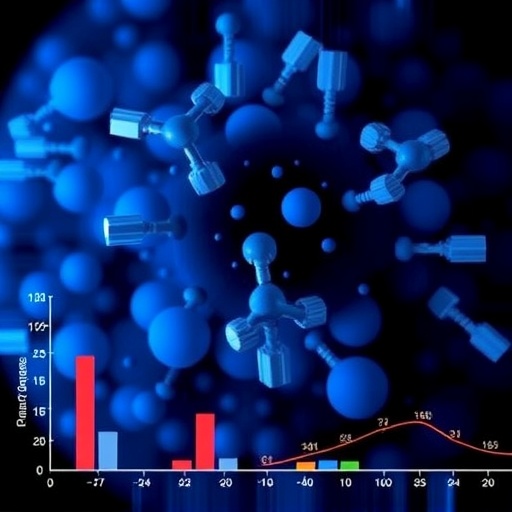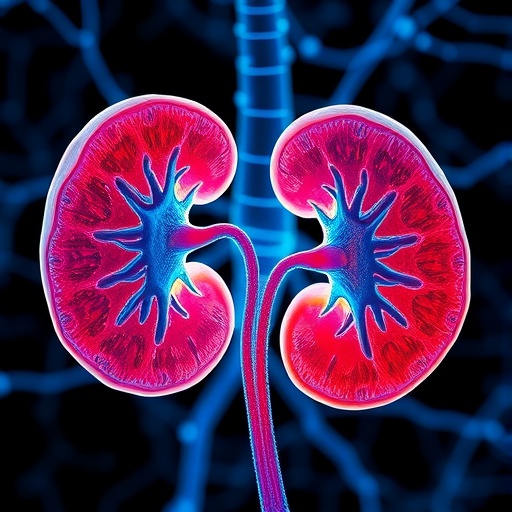The intricate relationship between body fat distribution and metabolic health has been an evolving field of scientific inquiry, bearing profound implications for our understanding of diseases such as gout. For decades, the body mass index (BMI) has served as a common albeit imperfect marker of obesity and related health risks. However, BMI’s inability to differentiate between specific fat compartments has limited its utility in predicting certain metabolic outcomes. A groundbreaking new study, recently published in the International Journal of Obesity, leverages advanced genetic techniques to unravel the causal influences of fat distribution on serum urate levels and gout risk, charting fresh territory in metabolic research.
This latest scientific investigation, conducted by Qiu, Li, Hua, et al., delves into the genetic underpinnings that distinguish subtypes of adipose tissue and their differential impacts on urate metabolism—a key biochemical contributor to gout. Unlike BMI, which aggregates body weight relative to height without discriminating between muscle and various fat types, this research centers on three principal fat depots: gluteofemoral adipose tissue (GFAT), abdominal subcutaneous adipose tissue (ASAT), and visceral adipose tissue (VAT). Each of these adipose tissue locations exhibits unique biochemical activity, hormonal secretion patterns, and metabolic risk profiles, positioning them as critical factors in health outcomes beyond what traditional obesity measures reveal.
The authors harnessed the power of Mendelian randomization (MR), a sophisticated analytical technique that utilizes genetic variants as proxies to infer causation rather than mere association, thus reducing confounding factors inherent in observational studies. By deploying MR, the research team was able to investigate the causal relationships between genetically predicted fat distribution patterns and serum urate concentrations, as well as the subsequent risk of developing gout, a painful inflammatory arthritis caused by monosodium urate crystal deposition.
.adsslot_u47Xmvclp3{ width:728px !important; height:90px !important; }
@media (max-width:1199px) { .adsslot_u47Xmvclp3{ width:468px !important; height:60px !important; } }
@media (max-width:767px) { .adsslot_u47Xmvclp3{ width:320px !important; height:50px !important; } }
ADVERTISEMENT
Their findings revealed a striking protective effect of increased gluteofemoral fat on urate homeostasis. Genetically predicted higher GFAT was linked to significantly lower serum urate levels. This resonates with the phenotypic observations often described colloquially as “pear-shaped” body types, characterized by prominent fat accumulation around the hips and thighs. Conversely, visceral adiposity, typically associated with central or “apple-shaped” obesity, was found to causally elevate serum urate concentrations, thereby augmenting gout risk. This nuanced understanding surpasses the established knowledge where obesity was broadly implicated in gout without differentiating fat depot-specific impacts.
Mechanistically, gluteofemoral adipose tissue is metabolically distinct from visceral fat. GFAT tends to act as a metabolic sink, sequestering excess fatty acids and preventing their release into circulation, thereby mitigating systemic inflammation and insulin resistance. Additionally, GFAT’s endocrine profile differs markedly from VAT, often producing beneficial adipokines and anti-inflammatory mediators. This adipose tissue compartment’s capacity to improve metabolic resilience accentuates the paradox seen in some obesity phenotypes where excess weight does not always equate to heightened disease risk.
Furthermore, the study underscores that VAT, nestled deep within the abdominal cavity around internal organs, secretes pro-inflammatory cytokines detrimental to systemic metabolism and renal function. These secretions likely exacerbate hyperuricemia through impaired kidney urate excretion and enhanced urate production. Given that gout pathogenesis is intricately linked to urate supersaturation and crystal formation in joints, visceral fat’s role gains new prominence as a modifiable risk factor.
This research carries profound epidemiological and clinical implications, challenging the current paradigms that predominantly rely on BMI and encouraging a shift toward more precise phenotyping in metabolic assessment. Personalized medicine approaches could soon incorporate genetic markers corresponding to fat distribution to stratify gout risk and tailor prevention strategies. This is particularly relevant as gout prevalence continues to escalate globally, driven by shifting dietary patterns, aging populations, and increasing obesity rates.
The study’s design, integrating large-scale genome-wide association study (GWAS) data with genetic instruments representative of regional adiposity, exemplifies the advancing frontier of genetic epidemiology. The Mendelian randomization framework offers robustness against reverse causation—a long-standing hurdle in dissecting obesity’s multifaceted effects. Moreover, the delineation of fat depot-specific influences enriches the understanding of adipose biology and paves the way for targeted therapeutic interventions.
Despite its rigorous methodology, the research acknowledges certain limitations, including population ancestry constraints predominantly of European descent, which may limit the generalizability of findings. Future studies aiming to replicate these results across diverse populations will be indispensable to ensure broad applicability. Additionally, integrating multi-omic approaches, including transcriptomics and metabolomics, could further elucidate the pathways by which fat depots exert systemic effects on urate metabolism.
Critically, this work may also reignite debates regarding the so-called “obesity paradox,” wherein some individuals with excess body weight manifest paradoxically lower cardiovascular or metabolic disease risks. By uncovering protective genetic predispositions associated with favorable fat distribution, it highlights that not all obesity phenotypes are created equal and that the biological context matters tremendously.
Clinicians and researchers alike should take note of these findings to refine diagnostic criteria and treatment algorithms for gout. Interventions emphasizing visceral fat reduction instead of indiscriminate weight loss might yield superior outcomes in managing hyperuricemia and preventing gout flares. This nuanced approach will require integrating body composition analysis into routine practice, potentially employing imaging modalities like MRI or CT scans for detailed fat mapping complemented by genetic risk scoring.
Looking ahead, this investigation also opens avenues for pharmacological developments aimed at modulating fat distribution or its metabolic outputs. Drugs capable of redirecting lipogenesis toward gluteofemoral stores or altering adipokine secretion profiles could represent innovative therapeutic strategies to curb metabolic disease burdens. Furthermore, lifestyle modifications—such as targeted exercise regimens that enhance lower-body muscle and fat mass—could find renewed emphasis in clinical guidelines.
In summation, Qiu and colleagues have elucidated an elegant genetic narrative that intricately ties body shape, specifically pear-shaped phenotypes, to decreased uric acid burden and gout risk. Their findings elevate the discourse beyond crude measures of obesity, spotlighting the pivotal role of adipose tissue heterogeneity in disease pathogenesis. As the global health community confronts rising morbidities associated with metabolic dysfunction, insights from this research will inform more refined, mechanistically sound preventive and therapeutic paradigms.
This study represents a milestone in understanding how nuanced fat depot biology influences complex metabolic traits. It underscores the necessity for continued interdisciplinary research integrating genetics, epidemiology, physiology, and clinical medicine. By unlocking how our genes predispose us to certain fat distributions and, consequently, disease susceptibilities, science advances toward precision healthcare that accounts for individual variability with unprecedented granularity.
As personalized medicine matures, findings like these will catalyze shifts in public health strategies, encouraging earlier identification of at-risk individuals through genetic screening and promoting culturally and biologically tailored interventions. Ultimately, decoding the fat distribution–urate–gout axis not only enriches metabolic biology but also holds promise for curtailing the global impact of gout and related disorders through precision-targeted approaches.
Subject of Research: Genetic investigation of fat distribution effects on serum urate levels and gout risk using Mendelian randomization.
Article Title: Pear-shaped body types linked to lower risk of gout: genetic evidence from Mendelian randomization.
Article References:
Qiu, Y., Li, C., Hua, Y. et al. Pear-shaped body types linked to lower risk of gout: genetic evidence from Mendelian randomization. Int J Obes (2025). https://doi.org/10.1038/s41366-025-01875-6
Image Credits: AI Generated
DOI: https://doi.org/10.1038/s41366-025-01875-6
Keywords: Mendelian randomization, fat distribution, body fat compartments, gluteofemoral adipose tissue, visceral adipose tissue, serum urate, gout risk, obesity phenotypes, metabolic health, genetic epidemiology
Tags: abdominal subcutaneous fatadipose tissue typesbody fat compartmentsfat distribution and metabolismgenetic influences on obesitygluteofemoral adipose tissuegout risk reductionInternational Journal of Obesity studymetabolic health researchpear-shaped body typeserum urate levelsvisceral fat and health





